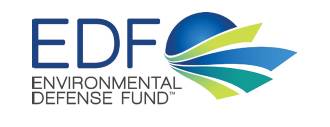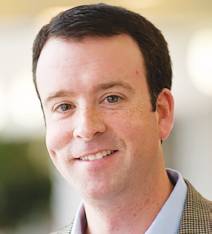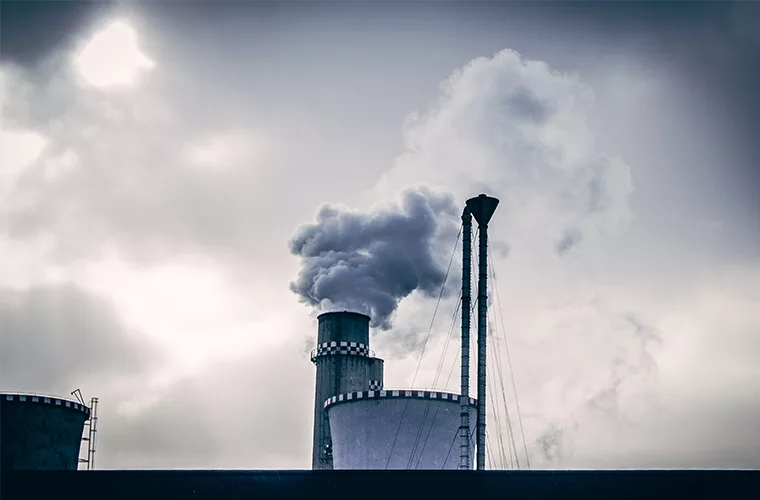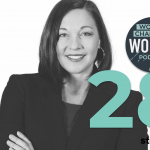THE NEXT PHASE OF CORPORATE LEADERSHIP
Mr. Izzo isn’t the only one who sees opportunity in energy efficiency and clean power. Many companies have set ambitious energy goals to increase efficiency, cuts costs, and lower their emissions. Momentum for climate action has continued to build over the past few months, with many high-profile companies signaling their support for climate leadership and making new commitments to reduce emissions, drive low-carbon investments, and deploy more clean energy through the American Business Act on Climate Pledge, the Ceres Climate Declaration, and the We Mean Business coalition. Chinks are also appearing in the opposition’s armor, with BP, Shell, Apple, Google, and others exiting groups like the American Legislative Exchange Council (ALEC) over its stance on climate change.
 For nearly 25 years, Environmental Defense Fund (EDF) has partnered with leading companies to accelerate environmental innovation in their products, operations, strategies, and supply chains. In fact, it was EDF’s early partnerships with McDonald’s and FedEx that first attracted me to the organization. Together, we have kick-started market transformations in sectors including fast food, shipping, retail, private equity, and commercial building energy efficiency. While we’ve made considerable progress, there’s still a lot of work to be done to reach the low-carbon, clean energy future we can create together. To get there, businesses must now take the next step in leadership by supporting and helping to shape the smart regulatory and policy changes required to preserve the natural systems that people, communities, and companies need to thrive.
For nearly 25 years, Environmental Defense Fund (EDF) has partnered with leading companies to accelerate environmental innovation in their products, operations, strategies, and supply chains. In fact, it was EDF’s early partnerships with McDonald’s and FedEx that first attracted me to the organization. Together, we have kick-started market transformations in sectors including fast food, shipping, retail, private equity, and commercial building energy efficiency. While we’ve made considerable progress, there’s still a lot of work to be done to reach the low-carbon, clean energy future we can create together. To get there, businesses must now take the next step in leadership by supporting and helping to shape the smart regulatory and policy changes required to preserve the natural systems that people, communities, and companies need to thrive.
In the near term, we need more aggressive private sector leadership and strong support for solutions like the CPP. Any sustainability officer who has tried to competitively price green power or build the business case for an energy efficiency program has a stake in how the CPP gets implemented by the EPA and the states. By weighing in at the state level, companies can encourage states to act early and boldly, helping accelerate the shift towards a lower-carbon economy and ensuring states leverage every opportunity to expand renewable energy and energy efficiency.
“Those who are already leading the way on sustainability are returning real value to their customers and investors by committing to cleaner and more efficient energy use.”
WHAT’S NEXT WITH THE CLEAN POWER PLAN
ACCELERATING PROGRESS FOR SOME, BUILDING ON-RAMPS FOR OTHERS
The CPP builds on progress already being made by states and businesses. It allows states to tailor emission reduction plans that take advantage of their own unique opportunities, and it ensures important emission reductions from existing power plants, the single largest source of carbon pollution in the United States and one of the single largest sources in the world. Statements from numerous power companies, states, industry experts, and others confirm that the CPP is achievable and many states are well on their way toward meeting their 2022 goals. That’s in part because natural gas and renewables have accounted for 93 percent of all new power generation since 2000, with coal-fired plants being retired in many areas due to market and other pressures.
BUSINESS CAN BE STATES’ CO-PILOT
The plan puts states in the driver’s seat to develop plans and strategies to reduce emissions efficiently and cost-effectively at the state level. Companies, however, have a choice: they can put up roadblocks that delay innovation and impact health and the environment; or they can help pave the way by working closely with states to design the approaches that will work best for the environment and the economy. Choosing the latter gets us down the road further and faster to lower emissions, increased efficiency, and cleaner energy options.
MANY BUSINESSES ARE ALREADY MAKING THEMSELVES HEARD
Organized by Ceres, 365 companies and investors sent letters to governors across the country calling for swift development of state implementation plans to comply with the CPP. These companies and investors know that there is tremendous economic opportunity in tackling climate change and look forward to working with their governors to develop state plans over the coming year.
THE CPP WILL HELP SHIFT SUSTAINABILITY AND INNOVATION INTO HIGH GEAR
Those who are already leading the way on sustainability are returning real value to their customers and investors by committing to cleaner and more efficient energy use. Under the CPP, opportunities to deploy these solutions should increase: electric utilities facing obligations to reduce their own emissions will be incentivized to expand programs that help businesses invest in more efficient equipment, purchase green power, and deploy renewable energy at their facilities.
IT’S TIME TO ACCELERATE
The CPP builds on the progress we have seen in recent years and will help ensure that the nation accelerates the transition to a low-carbon economy. That progress is crucial to help build support for a global deal on climate by showing other world leaders that the United States is committed to getting its own emissions under control.
What companies need to do now is to stay informed and get engaged in the states where they’re headquartered or operate. Understand how the states in which you do business are planning to address the roll-out of the CPP, and use your leverage to influence business-positive and low-carbon outcomes.

Tom Murray spearheads the Corporate Partnerships program at Environmental Defense Fund, working with multinational companies to accelerate environmental innovation in business products, services, and operations. Ranked #1 for effective environmental partnerships by the Financial Times, Tom’s team has kicked off transformations in market sectors from shipping to retail, and from oil and gas to private equity.





